NAVYPEDIA
 Support the project with paypal
Support the project with paypal
Ships
| Name | No | Yard No | Builder | Laid down | Launched | Comp | Fate |
|---|---|---|---|---|---|---|---|
| U1 | 236 | Deutsche Werke, Kiel | 2.1935 | 15.6.1935 | 6.1935 | sunk 16.4.1940 | |
| U2 | 237 | Deutsche Werke, Kiel | 2.1935 | 1.7.1935 | 8.1935 | collision 8.4.1944 | |
| U3 | 238 | Deutsche Werke, Kiel | 2.1935 | 19.7.1935 | 8.1935 | stricken 8.1944 | |
| U4 | 239 | Deutsche Werke, Kiel | 2.1935 | 31.7.1935 | 8.1935 | stricken 8.1944 | |
| U5 | 240 | Deutsche Werke, Kiel | 2.1935 | 14.8.1935 | 9.1935 | foundered 19.3.1943 | |
| U6 | 241 | Deutsche Werke, Kiel | 2.1935 | 21.8.1935 | 9.1935 | stricken 8.1944 |
Technical data
| Displacement standard, t |
|
|---|---|
| Displacement normal, t | 254 / 303 |
| Length, m | 40.9 |
| Breadth, m | 4.08 |
| Draught, m | 3.83 |
| No of shafts | 2 |
| Machinery | 2 MWM diesels / 2 SSW electric motors |
| Power, h. p. | 700 / 360 |
| Max speed, kts | 13 / 6.9 |
| Fuel, t | diesel oil 12 |
| Endurance, nm(kts) | 1600(8) / 35(4) |
| Armament | 3 - 533 TT (bow, 5 or 18 mines) |
| Electronic equipment | GHG hydrophone |
| Complement | 22 |
| Diving depth operational, m | 80 |
Project history
First submarines built in Germany after a cancellation of Versailles limitations. As prototype Finnish submarine Vesikko, designed in Germany on the basis of coastal submarines of types UB-II and UF of the First World War period was been taken. II series submarines differed from a prototype by increased machinery power and fuel stowage and improved manoeuvrability. These submarines received in Kriegsmarine nickname "canoe".
Single-hulled, with internal ballast tanks. Operational diving depth was 80m, maximal 120m; diving time was 25-35sec. Welding, widely used at building, allowed to lower hull weight. Differences between types were brought together basically to increasing of hull dimensions and fuel stowage. First two series originally did not receive artillery, guns were installed already during service. Instead of torpedoes submarines could carry 12 TMA or 18 TMB mines.
To beginning of war majority of boats of II series served in training role, but then they began to be got to take part in battle operations, including minelaying.
Modernizations
1938 - 1939, all: + 1 x 1 - 20/65 C/38
1942-1943, most survived: + FuMB 1 Metox ECM suite
1943-1944, most survived: - FuMB 1 Metox ECM suite; + FuMB 3 Bali, FuMB 6 Palau ECM suites
Naval service
U1 was lost, possibly, 6.4.1940 N off Terschelling on mines laid by British destroyers Esk, Express, Icarus and Impulsive. U2 was sunk 8.4.1944 as result of collision with trawler Helmi Suhle W off Pillau, salvaged 9.4.1944 and handed over on demolition. U5 was sunk 19.3.1943 as result of underwater accident W off Pillau.
In 1944 U3, U4 and U6 were stricken and taken apart on spare parts.
 HOME
HOME FIGHTING SHIPS OF THE WORLD
FIGHTING SHIPS OF THE WORLD GERMANY
GERMANY SUBMARINES
SUBMARINES "IIA" type coastal submarines (U1) (1935)
"IIA" type coastal submarines (U1) (1935)
